Explore Osteopathic Medicine
About Osteopathic Medicine
Osteopathic medicine is a medical specialty focused on delivering primary care to patients, similar to the scope of general practice or family medicine. Physicians who practice osteopathic medicine are also known as osteopaths, and are denoted by the suffix DO (Doctor of Osteopathy). Similar to an MD (Doctor of Medicine), osteopaths are trained to prescribe medication and perform some minor surgeries – the difference between the two lies within the manner and delivery of care. The vast majority of osteopathic physicians (60%) practice within the following primary care medical specialties: family and general medicine, pediatrics, internal medicine, and obstetrics & gynecology.
The American Osteopathic Association (AOA) notes that osteopaths “combine today’s medical technology with their ears to listen caringly to their patients, with their eyes to see their patients as whole persons, and with their hands to diagnose and treat patients for injury and illness.” This general philosophy of connecting with the patient and understanding all facets of a patient’s life may be referred to as holistic medicine. Within this holistic approach, the osteopath will look at not only the patient’s physical needs and symptoms, but attempt to analyze and fully understand the patient’s psychological, emotional and social need as well.
Doctors of osteopathic medicine often practice a hands on approach known as osteopathic manipulative treatment (OMT), where the physician uses their hands to diagnose, treat and prevent injuries, illnesses and disease. Osteopathic physicians are able to treat a wide variety of symptoms and conditions. DOs are able to diminish a variety of pains, encourage the body’s natural healing capabilities and increase mobility amongst patients by utilizing OMT. The AOA notes that manipulative treatment by osteopaths can be utilized to treat conditions such as migraines, sinus disorders, asthma, carpal tunnel syndrome, menstrual pain and asthma; and “when appropriate, OMT can complement, and even replace, drugs or surgery. In this way, OMT brings an important dimension to standard medical care.”
Osteopathic Medicine Education & Training
After successfully completing a four year undergraduate degree with emphasis on courses in science, students in pursuit of a Doctor of Osteopathy (DO) degree must complete a four year program of study at an accredited osteopathic medical school. During the first two years of study, the student will take courses based in the sciences, in areas such as anatomy, histology, physiology, microbiology, pharmacology, clinical practice skills, physician-patient communication skills, as well as osteopathic manipulative medicine and the practices and principles of general osteopathy (with a focus on the musculoskeletal system).
During an osteopathic program, students are taught to listen closely to their patients and provide hands-on treatment, working with the body’s natural healing powers to care for the patient - osteopaths believe that “structure influences function.”
Throughout the final two years of osteopathic medical school, the student will complete a variety of clinical clerkships that focus on treating patients and practicing medicine. After successful completion of the medical program and graduation, the DO must complete an examination to become licensed. Following successful licensure, the student typically completes an internship, residency or fellowship, or a combination of all of three.






